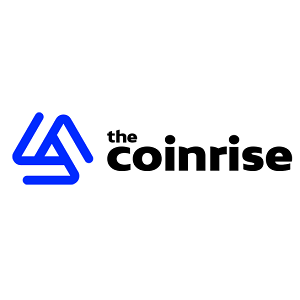Block: Let It Ride On S&P Inclusion?
6 min read
Summary Block, Inc. stock surged over 46% since my initial Buy call, fueled by S&P 500 inclusion and receding Ark Invest sell pressure. Despite 9% YoY gross profit growth, Block faces slowing growth trends and margin compression in key segments, raising concerns about future profitability. Stablecoins present a credible long-term threat to Block’s core business, though current disruption remains limited to DeFi rather than mainstream payments. After the recent rally and valuation expansion, I’m downgrading XYZ stock to Hold—I’ve trimmed my position but still see some upside from index inclusion. It has been a little over three months since I last wrote about Block, Inc. ( XYZ ) for Seeking Alpha. At that time, I initiated coverage with a Buy rating predicated mainly on two ideas. First, sell pressure from Ark Invest was approaching maturity after the asset manager had sold off most of its holdings. Second, multiple compression had brought shares down to a modest price to earnings ratio. It took a few weeks for the stock to find its footing, but the performance of XYZ since that post has been quite good: Data by YCharts Since my initial coverage of XYZ, the stock has rallied by over 46% against an index (SPY) that – while also impressive – is up just 20% in three months. In this article, I’ll provide an updated take on XYZ given the recent rally in the stock. Major Catalyst: S&P 500 Inclusion The price of XYZ jumped by about 10% in post-market trading on the news that the stock will replace Hess (NYSE: HES ) in the S&P 500 (SP500) on July 23rd. As of July 21st intraday, the stock has indeed held most of that gain and is up by more than 8% as of article submission. The reason why S&P 500 inclusion is generally viewed as such a bullish catalyst for a stock is because index-tracking funds like ETFs will buy the stock to be properly weighted to the index. While this doesn’t diminish the need for the company to continue executing fundamentally, we have seen index-inclusion greatly enhance the returns of some stocks in the past. Notable examples of stocks that have rallied significantly following S&P 500 inclusion would be Tesla ( TSLA ) and Palantir ( PLTR ); each of which are currently among the top 25 stocks in the world by market capitalization. I don’t think we’ll see XYZ exhibit the same type of performance for a couple reasons; slowing growth and potential stablecoin disruption. Q1 25 For the quarter ended March 2025, Block reported top line revenue of $5.8 billion. This was a 3% decline from the prior year period and almost entirely attributed to a 15% year-over-year decline in the company’s Bitcoin ( BTC-USD ) revenue segment. On the surface, this might be concerning, but Bitcoin has historically been Block’s least profitable business with meaningful revenue generation: Revenue (000s) Q1-25 Q1-24 YoY Transaction-based $1,550,731 $1,511,209 2.62% Subscription and Services $1,890,973 $1,682,294 12.40% Hardware $28,690 $32,501 -11.73% Bitcoin $2,301,402 $2,731,124 -15.73% Total $5,771,796 $5,957,128 -3.11% Source: Block Inc, 10-Q. Transaction revenue increased by 2.6% year-over-year and subscription/service revenue grew by 12.4%. Perhaps more importantly, the company’s gross profit of $2.3 billion was a 9% increase year-over-year. Slowing Growth (Block Inc) Though it must be pointed out that last quarter was a continuation of what has become a trend of decelerating profit growth. The company’s profit margins actually fell from Q1 24 in the transactions and Bitcoin segments: Gross Margin Q1-25 Q1-24 YoY Transaction-based 41.72% 42.22% -1.19% Subscription and Services 85.45% 83.97% 1.77% Bitcoin 2.84% 2.93% -3.29% Source: Block Inc, 10-Q, analyst’s calculations. Subscriptions/services margins continue to be impressive and grew almost 2% year-over-year from 84% to 85.5%. That segment currently accounts for 70% of Block’s gross profit. The question is, will Block’s transaction and subscription segments erode over time as merchants look to cheaper alternatives? Stablecoins Are Disruptive To Block’s Primary Profit-Makers With the recent signing of the GENIUS Act in the United States, the green light to innovation in the country has effectively been given. Stablecoin Market Cap (DeFi Llama) The market capitalization for stablecoins globally has surged passed $261 billion. The recent ramp in stablecoin supply is very much a result of President Donald Trump’s election victory in November with a 50% surge in supply since election day. The President ran on regulatory clarity and acceptance of digital assets during his campaign. With his signing of the GENIUS Act, he has largely delivered on that campaign promise from where I sit. Now the race to grow stablecoin usage for payments really begins. Stablecoins have seen increased usage through DeFi protocols and yield-based platforms over the last several years. But they have admittedly not been well utilized for peer-to-peer payments or B2C transactions over the years. P2P Stable Supply (Artemis) Artemis calculates “peer-to-peer” stablecoin supply as coins that are not held in smart contract wallets like DEXes or DeFi protocols. Back in June 2024, $128.8 billion of the $159.3 stablecoin supply was of the P2P variety – or 80.8% of stablecoin supply. A year later, P2P supply growth – while impressive at 24% – has actually not been as strong as stablecoin growth in smart contract wallets. At $159.6 billion of the $250.0 billion stablecoins in June, P2P share of supply fell from 80.8% a year ago to 63.8% last month. My read on this is stablecoin usage growth is happening mainly through DeFi rather than merchant or P2P usage at this point. This would imply stablecoins are not yet a significant headwind for Block. However, that doesn’t mean that trend has to continue. Stablecoin networks are still young. With the regulatory environment in the United States turning more supportive of innovation rather than one that protects incumbent systems, un-gated blockchain networks with low-cost user fees may soon challenge the more walled garden approach of platforms like Cash App or Venmo. Valuation Is Extended Again Back in April, XYZ was exhibiting valuation multiple compression and even had a trailing twelve month earnings ratio that was inline with the sector median. That is no longer the case: Data by YCharts With a trailing twelve month P/E of over 19, XYZ is well ahead of the financials sector median of 13.8. The price to sales ratio looks attractive at just 1.9x trailing sales and 1.8x forward sales, but that number is largely skewed by a Bitcoin business that has a low gross margin compared to Block’s transaction and subscription businesses. Block Value Grade (Seeking Alpha) Seeking Alpha’s Valuation Grade for XYZ has also deteriorated over the last 3 months having gone from a “C-” in mid-April to a “D-” as of July 21st. The sales multiples are the only ratios that don’t look overvalued. And again, this is largely due to Block’s low-margin Bitcoin business accounting for 40% of the top line. Closing Thoughts Given the valuation and the news-related pop that the stuck is currently exhibiting, I certainly wouldn’t bemoan taking some profit in this investment for those who bought the lows back in the Spring. I myself have taken a little bit off in this name, but still hold XYZ at this time due to the potential for more upside from S&P inclusion. But I’ll reiterate that the S&P 500 inclusion isn’t a silver bullet. The company must find a way to grow and thrive in what might be a quickly evolving payments industry. The threat that stablecoins pose to incumbent payment processors is legitimate, though possibly overstated without meaningful advances in ZK proof integration with these systems; nobody should be comfortable with the entire world to knowing every time they buy a coffee with USDC ( USDC-USD ) on Solana ( SOL-USD ). All this said, I’m downgrading XYZ to Hold given the recent run. Again, I’m still long the stock personally, but it’s not nearly as “cheap” as it was three months ago.

Source: Seeking Alpha



